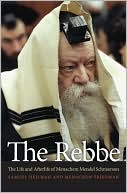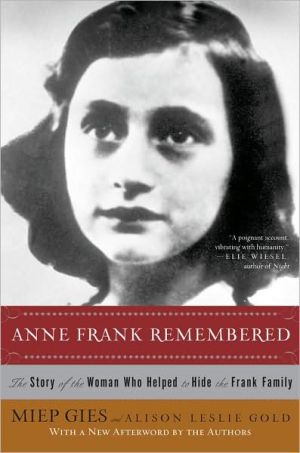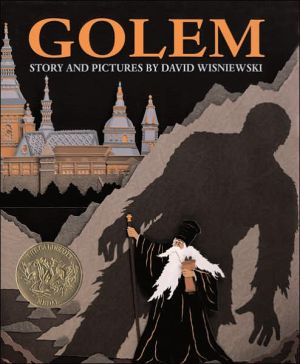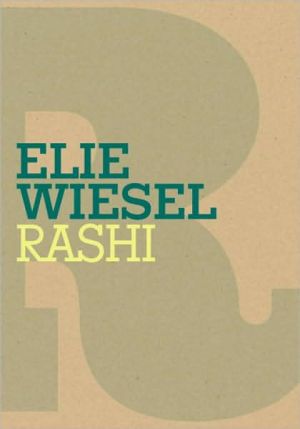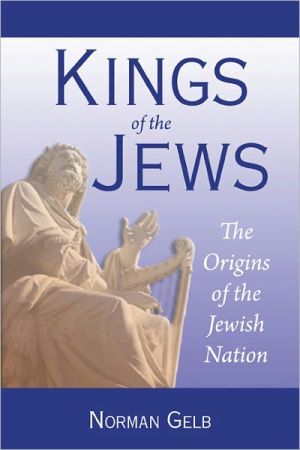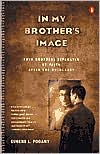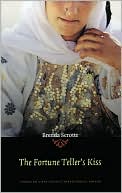Holocaust Hero: The Untold Story and Vignettes of Solomon Schonfeld, an Extraodinary British Orthodox Rabbi Who Rescued Four Thousand during the Holocaust
One of the most remarkable, but unheralded heroes of the Holocaust was Solomon Schonfeld, a young British rabbi who personally rescued thousands of Jews during the tragic decade of 1938-1948. Rabbi of a small Orthodox congregation and pioneer of the day school movement in London, England, Schonfeld was inspired by his former teacher, Rabbi Michael Ber Weissmandl, to embark on rescue work. Under the auspices of the Chief Rabbi's Religious Emergency Council, an organization he created with the...
Search in google:
The charismatic rabbi of a small Orthodox congregation in London, Schonfeld escorted thousands of Jewish children, rabbis, teachers, and other religious functionaries to England between 1938 and 1948, providing them with kosher homes, Jewish educations, and jobs. He also created mobile synagogues that were the first to serve the spiritual and physical needs of the survivors in liberated areas. Kranzler's b&w-illustrated biography tells his story and includes 40 vignettes by individuals Schonfeld rescued. Kranzler is the author of nine books on the Holocaust. Annotation ©2004 Book News, Inc., Portland, OR
holocaust hero\ the untold story and vignettes of Solomon Schonfeld an extraordinary British Orthodox rabbi who recued 4000 Jews during the Holocaust \ \ By David Kranzler \ Ktav Publishers, Inc.\ Copyright © 2004 David Kranzler\ All right reserved.\ \ Chapter One\ BACKGROUND \ Solomon Schonfeld was born in London on February 21, 1912, the second son of seven siblings. His father, Rabbi Dr. Victor (Avigdor) Schonfeld, had come from Vienna three years earlier to assume the spiritual leadership of a small Orthodox congregation in North London. The elder Rabbi Schonfeld received a traditional yeshiva education in his native Hungary, and then went to Vienna for graduate studies. He served his London community for two decades-with one brief interruption-and distinguished himself as a pioneer in Britain's Orthodox Jewish life.\ Avigdor, who was the force majeur in Solomon's life, was born in 1880, in Süttö, Hungary, to Jakob and Betty Schonfeld. He was named for his grandfather, a rabbi in Vac, Hungary. Avigdor's father was a shopkeeper and a learned man, and when Avigdor showed early promise, he sent him to yeshivos in Gross-Tapoicany and the Shevet Sofer's (Rabbi Simcha Bunim Schreiber's) yeshiva in Pressburg/Bratislava for his smicha (rabbinical ordination). The latter location, then part of the Austro-Hungarian Empire, later became part of Czechoslovakia. Unlike others, Avigdor completed his secular studies at a non-Jewish gymnasium and attended the University of Vienna, eventually earning a doctorate in education in 1914 from the University of Giessen with a dissertation, Die Ethik Shafstbury, written in English-a language he taught himself. Because he did this while he remained true to his Torah heritage, he stood out among his peers.\ In 1909, Avigdor married Rochel Leah (Ella) Sternberg (1890-1971), a descendant of the nineteenth-century scholar, Rabbi Akivah Eger. She bore him six sons and a daughter. Her strong personality and ambitions for their children-and her husband's ability to deal with the secular world while remaining committed to his Orthodoxy-were pivotal factors in shaping Solomon's personality.\ Avigdor espoused the weltanshauung of Rabbi Samson Raphael Hirsch-Torah im Derekh Eretz-that allowed Orthodox Jews to accept the secular world and secular knowledge as viewed through the prism of the Torah, while acknowledging the Torah's sovereignty. He also believed in Hirsch's concept of Austritt (separatism), a philosophy which posited that Orthodox Jews should develop their own totally separate, independent, recognized communities (kehillos) where they set themselves apart from the Einheits or Grossgemeinde (general Jewish community)-that included all factions of Jewish belief: Orthodox, Liberal and Reform. Rabbi Hirsch founded an Austritt kehillah in Frankfurt-am-Main in the latter part of the nineteenth-century, although many Orthodox Jews there preferred to remain part of the overall Jewish community.\ In time, six other congregations in different German cities followed Hirsch's example and set up their own Austritt communities. Still, most Jewish communities followed his ideological opponent, the great Talmudic scholar, Rabbi Seligman Ber Bamberger (1807-1878), the "Wurzburger Rav," who felt that it was incumbent on the Orthodox community to remain within the Grossgemeinde, as long as the Orthodox controlled the religious institutions (shechitah [kosher slaughter of meat], education, cemeteries, etc.). The concept of Austritt had a parallel development in nineteenth-century Hungary. (The separatists here were called the Orthodox kehillah, while the purely Reform kehillos were known as "Neolog." The remaining overall Grossgemeinde were known as the Status Quo.) Rabbi Moshe Sofer (1762-1839), the Chassam Sofer, inspired the struggle for independent Orthodox kehillos in Hungary. He was a leader and scholar who founded a famous yeshiva in Pressburg. He sought to retain Orthodox control over Jewish institutions that were challenged by the rising secular and Reform movements. While fully consonant with Hirsch's concept of Austritt, Hungarian Orthodoxy vehemently rejected Hirsch's second ideology of Torah im Derekh Eretz. While the battle between Hirsch and Bamberger raged in Germany during the 19th century and quieted down during the early part of the twentieth, history has shown that the separatists retained their loyalty to "Torah-true" Orthodox Judaism to a far greater degree than did those Orthodox who remained within the Grossgemeinde or Status Quo. Moreover, the mere existence of the separatist kehillos prompted the Reform elements in other cities to permit the Orthodox control over certain key institutions, such as education and shechitah.\ The impact of these philosophical and religious splits in the Jewish community cannot be underestimated. They had an impact on the rescue and relief efforts involving the Continental Orthodox Jewish refugees and, after the war, the survivors. * * *\ In 1904, Avigdor Schonfeld was appointed to a position in the Montefiore Synagogue in Vienna. When he received his smicha from Pressburg in 1908, he went to London and became the rabbi of the London Beth HaMidrash, whose president, Julius Lunzer, also believed in Hirschian ideals. The congregation saw the young rabbi as a kindred spirit who inspired their hopes for a revitalized Orthodox community in Britain.\ Soon after his arrival, Rav Avigdor realized that the British Jewish community was disorganized and weak, so he followed Hirsch's Austritt blueprint for rebuilding the kehillah, with Torah im Derekh Eretz as the principle on which it was based.\ In 1910, because he viewed youth as the future of Orthodoxy, he established the Chevra Ben Zakkai to encourage Torah study in young people (Chevras Limud Hatorah). It was the first such institution in England and was named for Rabbi Yochanan Ben Zakkai, the Talmudic scholar, who had witnessed the destruction of the Second Temple and reinvigorated Diaspora Judaism-that needed to survive in a world without the Holy Temple-by studying Torah. The Chevra Ben Zakkai was more than just a learning group. In addition to shiurim (lectures), Rav Avigdor offered boys and girls social activities like hiking and concerts, following the examples set by Zeirei Agudah and Esra, the German Orthodox youth groups. Young women were offered special lectures on the importance of women in Jewish history and their crucial role as homemakers.\ As a result of his programs, Rabbi Schonfeld was able to make Orthodox Jewish youth feel proud of who they were and what they believed in. In 1911, the Beis HaMedrash, under his leadership, spun off the Adath Yisroel Synagogue (the Adas), whose name was symbolic of the Hirschean ideal. Later that same year, Rabbi Schonfeld organized the first English Conference of Orthodox Rabbis in Leeds.\ The First World War (1914-1918) had an enormous impact on the European Jewish community and on Avigdor Schonfeld. More than 1.5 million Jews served in the armed forces of all the belligerents, out of proportion to their numbers in the general population. The heaviest fighting on the Eastern Front took place in the heartland of the East European Jewish community, which ran from the Baltic Sea in the north to the Black Sea in the south. Hundreds of thousands of Jews were uprooted and turned into refugees. (For example, Galicia, part of the Austro-Hungarian Empire, was taken and retaken six times between the Austrian and Russian armies. Each time they caused more destruction and created more refugees. Over 200,000 Galician Jews fled to Vienna, while a smaller number fled to Germany.) With their way of life torn asunder, and their religious institutions destroyed, many Jewish communities simply disappeared.\ Thousands of Jewish soldiers were captured and became prisoners of war in various countries, including Britain. At the same time, the British implemented the precedent-setting policy of interning "enemy-aliens"-people who were born in Germany or any other country fighting with Britain. These "enemy-aliens" included Jewish refugees from Belgium, Austria-Hungary and Eastern Europe. Although himself an "enemy-alien," Avigdor Schonfeld was exempt as a rabbi and was able to work with Dr. Joseph H. Hertz, Chief Rabbi of the British Empire, risking everything to help those in need. He even intervened with the military authorities to provide kosher food and other services for Orthodox and other Jewish internees.\ In 1917, buoyed by the Balfour Declaration that promised a future Jewish homeland in Palestine, Rabbi Schonfeld, who loved Eretz Yisroel, founded the British branch of Mizrachi, the religious Zionists who helped establish a Jewish homeland in British Mandate Palestine (the Yishuv). In 1920, he attended the Mizrachi World Conference in Amsterdam, was elected to its Central Bureau and given the assignment to lead the Mizrachi school system in the Yishuv.\ That same year, he met Harry Goodman, an active Mizrachist who later became secretary of World Agudah when Jacob Rosenheim, a refugee from Germany, was its president. Both Rosenheim and Goodman would later be members of Adas Yisroel when it was under Solomon Schonfeld's leadership.\ In 1921, leaving behind his unfinished work at Adas Yisroel, Rav Avigdor moved to Eretz Yisroel and confronted the challenge of building a Mizrachi Talmud Torah system following the principle of Torah im Derekh Eretz. He tried, without success, to get the Mizrachi and the Agudah to cooperate on educational efforts, advocating that the Mizrachi follow Hirsch's principle of Austritt-to remain separate and independent from the Jewish Agency (the Sochnut).\ The Mizrachi, however, preferred to benefit from the largesse of the Sochnut and accepted funding so as not to have to raise funds from other sources. In his letter of resignation, written in 1923, Rav Avigdor complained about the politics of it all:\ The battle of the Mizrachi still rages more fiercely to the right [Agudah] than ... to the left [the dominating labor Zionist organization]. And so long as this prevails, the enthusiasm of traditional Jewry cannot be awakened in the cause of Mizrachi. The Mizrachi has been making concessions to the Zionist organization for the last 25 years. It must now do the same toward the Aguda [sic] for the sake of a unified Orthodoxy.\ The disillusioned rabbi returned to London and the Adas, where he was welcomed with open arms and rebuilt the synagogue according to its original founding principles. He revitalized the Chevra Ben Zakkai youth groups and spent the next seven years working to assure that the fruits of his labor would blossom. At the same time, he hammered away at the British establishment Jews (United Synagogue) who called themselves Orthodox but were lax in their observance. He interested himself in the plight of Ethiopian Jewry, whose identification had been a subject of dispute since the late 19th century, and took a personal interest in one young man from Africa. Then, in 1925, the Adas purchased a cemetery in Enfield to meet its congregants' needs.\ The following year, Rav Avigdor created the Union of Orthodox Hebrew Congregations as an "amalgamation of synagogues which profess and practice Traditional Judaism," with its own beis din (court of Jewish law), kashrus authority, cemetery and other services. The creation of this independent Orthodox community (following his adherence to the Austritt philosophy) put him at odds with the United Synagogue, the established British Jewish community, whose leader, Rabbi Dr. Joseph H. Hertz (1872-1946) was recognized, by most, as the Chief Rabbi of the British Empire.\ There was a third Orthodox synagogue group, The Federation of Synagogues, under the leadership of Rabbi Meir Tzvi Jung (1858-1921) that was not part of the heated conflict. According to Retter, Jung and Schonfeld were very different personalities. Rav Avigdor was an activist, a public figure who built a "competing" Jewish community to face off against the British establishment Jews in United Synagogue. Rabbi Jung was passive and not seen as a threat by either Hertz or Schonfeld.\ In 1927, Rav Avigdor organized the Yavneh Union to "unite all the Orthodox youth societies of the [London] metropolis," anticipating by decades the Yavneh societies that would flourish in America among Orthodox college students in the 1950s and 1960s.\ In 1929, he attended the World Conference of Shomrei Shabbos (Sabbath observers) in Berlin, and later that same year established a Jewish Secondary School in London, a dream that took a long time to realize and was not without controversy.\ Many of Rav Avigdor's congregants and fellow Orthodox Jews felt that the British school system was the place for their children. In order to become an accepted part of British society, they were not willing to create self-imposed ghettos or train their children for the rabbinate. An analogous situation existed in the United States, where it was assumed that between the traditions their children learned at home and in the Talmud Torah afternoon schools, the Jewish future was assured.\ Rav Avigdor spent enormous effort to convince parents that their children could live as Orthodox Jews and still be accepted within English society. He told them that such a school would be:\ ... a centre [which] would be saturated with Judaism, where the boys and girls may be brought up in an up-to-date, but thoroughly Jewish atmosphere, where they will acquire the knowledge of Judaism along with other subjects, where the study of Judaism is not going to be a burden, as at the present, robbing them of their hours of leisure, and where they will take pride in exercising their best faculties as Jews.\ The first Jewish Secondary School opened at Finsbury Park on September 17, 1929 with a non-Jewish headmaster and with Rav Avigdor doing double-duty as principal and Judaism teacher. He was a role model for his students and saw his success in this endeavor as the beginning of a secondary school movement in the Orthodox world. Unfortunately, he did not live long enough to see his prophecy fulfilled. On January 1, 1930, when he was just forty-nine, Rabbi Avigdor Schonfeld died of blood poisoning from an infected cut that today could have been simply cured with penicillin.\ Thousands of mourners accompanied the rabbi's casket to the Enfield Cemetery. Among the numerous eulogies delivered that day was one from his second son, Solomon, who quoted from his father's last Rosh Hashanah sermon: "We do not just want life, but a purpose in life." That phrase was to set the standard for the young law student, who was chosen by his mother, the Rebbetzin, to take his father's place.\ \ Continues...\ \ \ \ Excerpted from holocaust hero by David Kranzler Copyright © 2004 by David Kranzler. Excerpted by permission.\ All rights reserved. No part of this excerpt may be reproduced or reprinted without permission in writing from the publisher.\ Excerpts are provided by Dial-A-Book Inc. solely for the personal use of visitors to this web site. \ \
AcknowledgementsProloguePrefacePt. 1Biography1The Setting3Introduction18Ch. 1Background23Ch. 2Prewar Rescue 1938-193944Ch. 3Prewar-Domestic58Ch. 4Wartime (Domestic)62Ch. 5Wartime Domestic74Ch. 6Rescue Efforts87Ch. 7Postwar98Illustrations120Pt. 2Vignettes121Tribute123An Appreciation123A Tribute125In Gratitude126Ch. 8Kindertransports-Vienna128aWith Crooked Teeth, Smiling128bMy First Half-Crown132cThe Pied Piper136dThe Students Help137eThe Mosser139fThere Came a Ray of Hope141gWe Need More Children142hThe Giant143iHe Sacrificed His Own Comfort146jI Was Dr. Schonfeld's "Kind"150Ch. 9Shefford156aShefford: The Story of a Jewish School156bWhoever Saves One Life160cThe Spirit of Shefford163dFish-eating Vegetarian175eShefford Healed Us183Ch. 10Internment189aA Wedding on the Isle of Man189bNo Longer a Refugee198cInternment Became Bearable199Ch. 11Survivors201aA Visitor Came to Cracow201bGenerations209cHe Made Me Feel Proud210dHe Never Forgot My Name213Ch. 12Harvest219aThe One-Man Vaad Hatzalah219bThe Presiding Rabbi225cHeir to His Father227dRescuer and Counselor228eGive Me Your Daughter229fKiddush in Caen230gMy Philosophy of Life231hAn Open Book: A Review of Schonfeld's: Message to Jewry, 1959232Epilogue235Glossary237Footnotes242Index263

